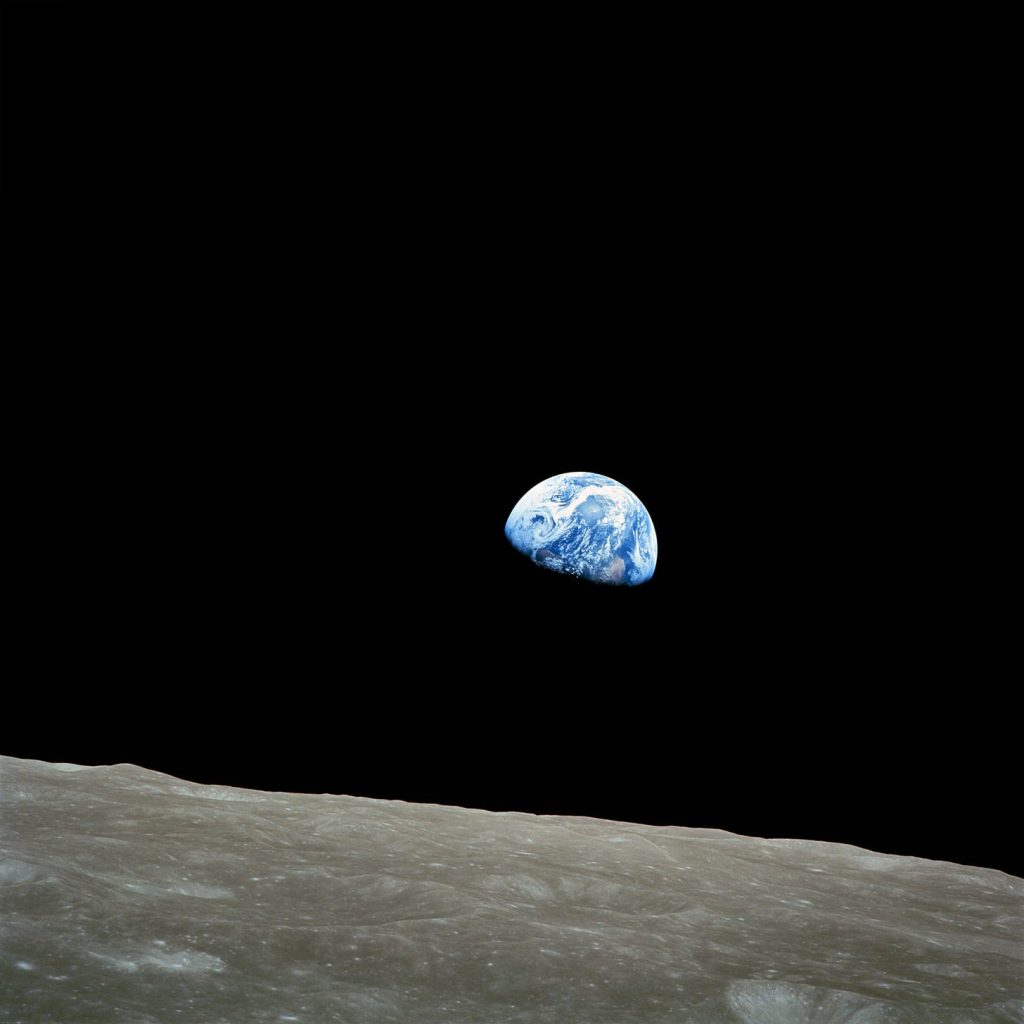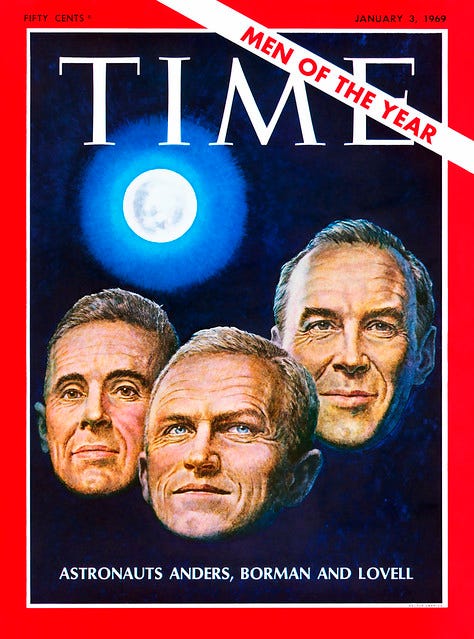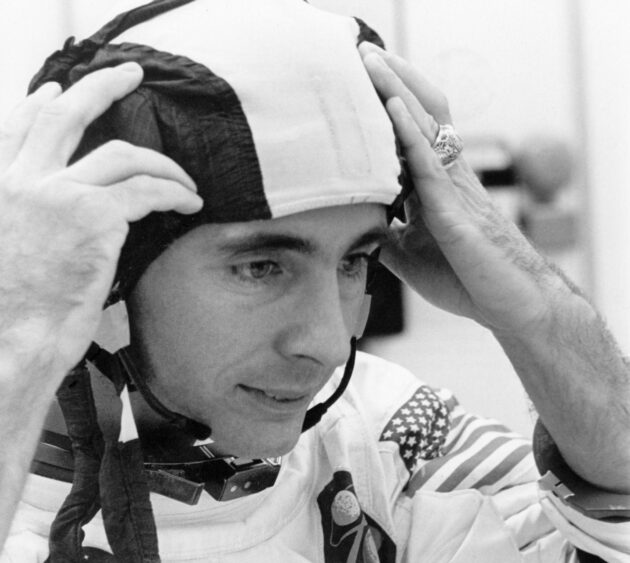1968 was a tumultuous year. Race riots, decreasing confidence in the Vietnam War, and the assassinations of Martin Luther King Jr. and Robert F. Kennedy had the nation on edge. Yet something happened at the end of that year that reminded America and the world that there was still hope for a better future.
The Space Program had seen setbacks and tragedy since the triumphs of Mercury and Gemini. A fire on the launchpad in 1967 killed astronauts Gus Grissom, Ed White, and Roger Chafee, and set the Apollo Program back for nearly two years as NASA sought to fix the myriad problems brought to light be the ensuing investigation.
By the end of 1968, however, the program was back on track. On December 21, 1968, Frank Borman, Jim Lovell, and Bill Anders set sail atop the most powerful rocket ever made on their way to become the first humans to visit the moon. It took nearly three days to reach the moon, and once in orbit the astronauts called back home for a live Christmas Eve television broadcast in which they read from the Book of Genesis:
During one of their lunar orbits, the astronauts became the first humans to see an earthrise. Bill Anders loaded some color film and took the now-famous picture through the window of the command module:

The astronauts headed home and splashed down in the Pacific Ocean on December 27. Among the many messages received by the astronauts after the mission was one that simply read, “Thank you Apollo 8. You saved 1968.” TIME Magazine named Borman, Lovell, and Anders their Men of the Year, back when that meant something:

Where does a man go from there? Borman and Lovell were 40 years old and Anders only 35. What could any of them possibly do that would ever top the experience of orbiting the moon
Jim Lovell remained with NASA and commanded the ill-fated Apollo 13. He missed the opportunity to walk on the moon when an accident damaged the spacecraft, but his leadership helped ensure that all three astronauts returned safely to earth. He later went into business, running a towing company in Houston and working for a telecommunications company in Chicago. Lovell’s book Lost Moon served as the basis for the 1995 film Apollo 13.
Frank Borman opted for a quiet life after NASA, serving as CEO of an airline company for a few years before running a Ford dealership in New Mexico and buying a cattle ranch in Montana. Borman passed away last November at the age of 95.
Bill Anders remained in government work for a while, serving on the Atomic Energy Commission, the Nuclear Regulatory Commission, and even a stint as ambassador to Norway. He served as CEO of General Dynamics in the early 90s before retiring to Anacortes, Washington. He established a charitable foundation to advocate for environmental issues.
Last Friday, Anders was flying his Beechcraft T34 aircraft over the San Juan Islands of Washington when he crashed into the water near Jones Island. He was 90 years old. Though tragic, it seems fitting for an Air Force veteran with more than 8,000 hours in the cockpit of a plane to go out in such a blaze of glory. More than half a century after becoming one of the first men to travel to the moon and back, Anders made his final splashdown, setting sail on his last eternal voyage.
Between 1968 and 1972, twenty-four men flew to the moon, twelve of which walked on the surface. Only six remain with us today, but they won’t for long. We are rapidly heading to a time when mankind has forgotten the achievements of the space race — soon it will all be myth, and many today already think none of it really happened. Hopefully Elon Musk and Project Artemis will once again reach the moon in the near future, but for now let us commit to never forgetting trailblazing men like Bill Anders.
About Brian Almon
Brian Almon is the Editor of the Gem State Chronicle. He also serves as Chairman of the District 14 Republican Party and is a trustee of the Eagle Public Library Board. He lives with his wife and five children in Eagle.













